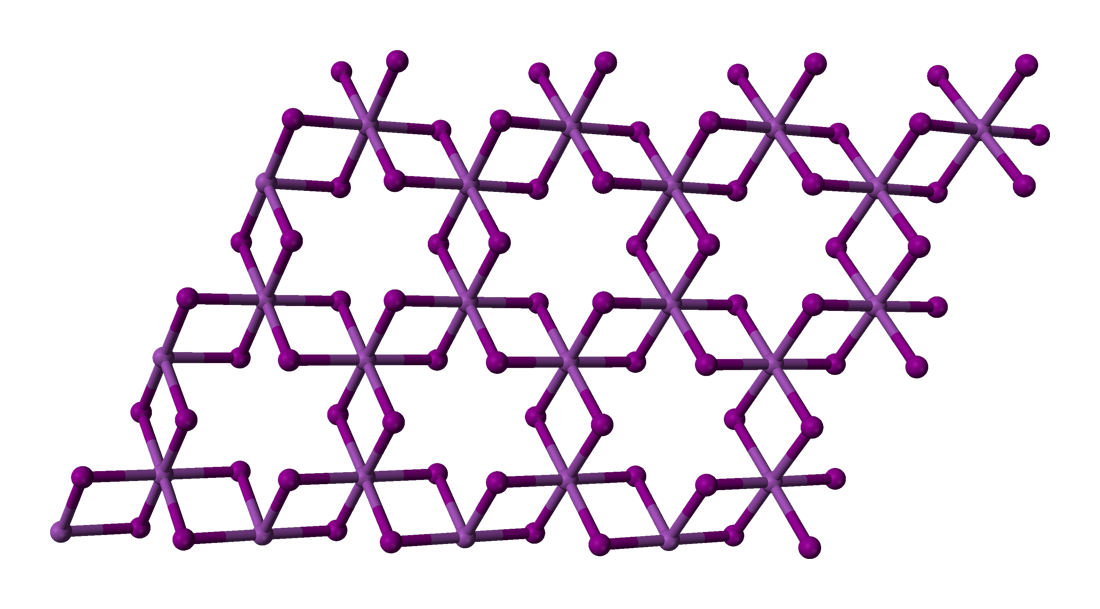Top Qs
Timeline
Chat
Perspective
Bismuth(III) iodide
Chemical compound From Wikipedia, the free encyclopedia
Remove ads
Bismuth(III) iodide is the inorganic compound with the formula BiI3. This gray-black salt is the product of the reaction of bismuth and iodine, which once was of interest in qualitative inorganic analysis.[3][4]
Bismuth(III) iodide adopts a distinctive crystal structure, with iodide centres occupying a hexagonally closest-packed lattice, and bismuth centres occupying either none or two-thirds of the octahedral holes (alternating by layer), therefore it is said to occupy one third of the total octahedral holes.[5][6]
Remove ads
Synthesis
Bismuth(III) iodide forms upon heating an intimate mixture of iodine and bismuth powder:[7][8]
- 2Bi + 3I2 → 2BiI3
BiI3 can also be made by the reaction of bismuth oxide with aqueous hydroiodic acid:[9]
- Bi2O3(s) + 6HI(aq) → 2BiI3(s) + 3H2O(l)
Reactions
Since bismuth(III) iodide is insoluble in water, an aqueous solution can be tested for the presence of Bi3+ ions by adding a source of iodide such as potassium iodide. A black precipitate of bismuth(III) iodide indicates a positive test.[10]
Bismuth(III) iodide forms iodobismuth(III) anions when heated with halide donors:[11]
- 2 NaI + BiI3 → Na2[BiI5]
Bismuth(III) iodide catalyzes the Mukaiyama aldol reaction. Bi(III) is also used in a Barbier type allylation of carbonyl compounds in combination with a reducing agent such as zinc or magnesium.
Remove ads
References
Wikiwand - on
Seamless Wikipedia browsing. On steroids.
Remove ads






